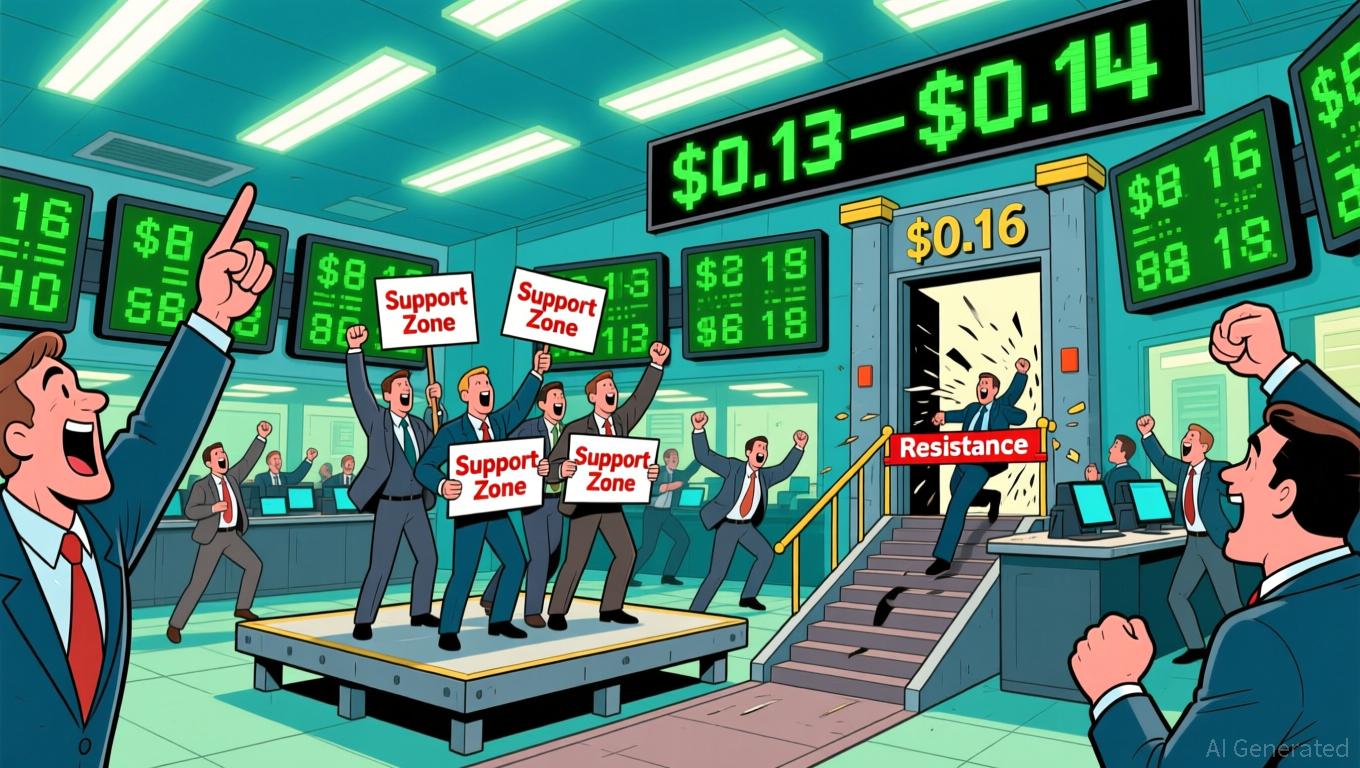Dovish Fed Chair: Blessing for Bitcoin or Threat to the Economy?
- The Fed's 25-basis-point rate cut sparks debate on Bitcoin's potential rally amid speculation about the next dovish chair. - Historical data shows Bitcoin typically benefits from sustained rate cuts, with 2020's emergency easing correlating to a $28,000 rebound. - Trump's shortlisted Fed candidates (Hassett, Waller, Warsh) all favor rate cuts, with Warsh's balance-sheet reduction plan seen as bullish for risk assets. - Market uncertainty persists as Fed's inflation forecasts and policy tone—rather than c
The recent 25-basis-point interest rate reduction by the U.S. Federal Reserve has sparked renewed debate about Bitcoin’s prospects for a strong upward move, especially as speculation grows regarding the policy direction of the next Fed chair. In the past,
The possibility of a more dovish Fed chair has become a major talking point. President Donald Trump is reportedly considering three main candidates—Kevin Hassett, Christopher Waller, and Kevin Warsh—all of whom have indicated support for rate cuts.
The Fed’s guidance on future policy and its inflation outlook will be crucial. In December 2024, a revised inflation forecast of 2.5% for 2025 and a reduction in expected rate cuts from three to two led to a 4.6% decline in Bitcoin after the announcement title5 [ 5 ]. This demonstrates how sensitive the crypto market is to macroeconomic developments. Although lower rates generally increase liquidity and weaken the dollar—conditions that tend to favor Bitcoin—efforts by policymakers to keep inflation in check could limit potential gains. The Fed’s current projections indicate two more rate cuts in 2025, but differing views among FOMC members highlight ongoing uncertainty title4 [ 4 ].
Both retail and institutional investors are taking a more cautious approach. Strategies such as diversification, lowering leverage, and using dollar-cost averaging are being recommended to manage volatility, especially around Fed announcements. Continued inflows into spot ETFs, reflecting steady institutional participation, could further fuel a Bitcoin rally if dovish policies are enacted title2 [ 2 ]. However, alternative cryptocurrencies remain highly volatile and may experience sharper corrections during periods of uncertainty title2 [ 2 ].
Regulatory and geopolitical developments add further complexity. A dovish Fed could weaken the dollar, potentially encouraging more global adoption of Bitcoin as a hedge. On the other hand, increased regulatory scrutiny—such as SEC decisions on crypto ETFs—could offset the positive effects of looser monetary policy title2 [ 2 ]. Under a Trump administration, the balance between pro-crypto initiatives (like holding Bitcoin reserves) and risks to monetary independence remains unpredictable title9 [ 9 ].
In conclusion, Bitcoin’s short-term outlook will be shaped by the Fed’s policy direction, the next chair’s approach, and wider macroeconomic trends. While a shift toward more accommodative policies could drive significant gains, investors should also consider risks such as stagflation, regulatory challenges, and market saturation. Careful attention to the Fed’s communications is advised, as the interplay of these factors will determine whether Bitcoin continues its rally or faces a correction.
Disclaimer: The content of this article solely reflects the author's opinion and does not represent the platform in any capacity. This article is not intended to serve as a reference for making investment decisions.
You may also like
Bitcoin News Update: S&P Rating Drop Highlights Tether’s Risky Asset Holdings and Lack of Transparency
- S&P downgrades Tether's USDT to "5 (weak)" due to high-risk reserves and transparency gaps. - Tether's 5.6% BTC exposure exceeds overcollateralization margins, risking undercollateralization if prices drop. - CEO dismisses critique as traditional finance bias, claiming no "toxic" assets in reserves. - Regulators intensify scrutiny as stablecoin centralization risks emerge amid $184B USDT circulation. - S&P urges Tether to reduce risky assets and enhance reserve disclosure to rebuild trust.

Dogecoin Latest Updates: Is a Repeat Performance on the Horizon? Holding $0.15 May Signal a 611% Rally for Dogecoin
- Dogecoin (DOGE) stabilized near $0.15 support, triggering historical 611% rally potential to $1 by 2026. - Grayscale's GDOG ETF and pending Bitwise BWOW ETF mark institutional adoption, though initial inflows remain muted. - Technical indicators show mixed momentum with RSI near oversold levels and key resistance at $0.16. - Market remains divided as ETF-driven liquidity and on-chain infrastructure contrast with macroeconomic and regulatory risks.

Turkmenistan’s Approach to Cryptocurrency: Centralized Oversight Amidst a Decentralized Age
- Turkmenistan legalizes crypto trading under strict 2026 regulations, granting state control over exchanges, mining , and custodial services. - Law mandates KYC/AML compliance, bans traditional banks from crypto services, and classifies digital assets into "backed" and "unbacked" categories. - Central bank gains authority to operate state-monitored distributed ledgers, contrasting with decentralized approaches in South Korea and Bhutan. - Framework aims to balance innovation with oversight, testing Turkme
Bitcoin News Update: Has $162 Billion Left Crypto Due to Institutional Buying or a Broader Market Pullback?
- BlackRock deposited 4,198 BTC and 43,237 ETH into Coinbase amid crypto sell-offs, despite $355.5M Bitcoin ETF outflows. - A 1.8M BTC ($162B) overnight exchange withdrawal sparks speculation about institutional accumulation or portfolio rebalancing. - $40B in BTC/ETH exchange inflows and record $51.1B Binance stablecoin reserves highlight institutional demand for regulated crypto products. - On-chain data shows 45% of large deposits (≥100 BTC) and 1.8M BTC withdrawals, indicating mixed market sentiment ah
